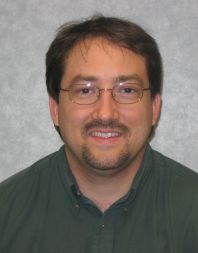Brian Washburn
If you can read this, your browser is unable to properly import or use
Cascading Style Sheets (CSS). Please upgrade to a more modern browser.

Brian Washburn
ProfessorPh.D. Physics, 2002, Georgia Institute of Technology
Contact Information:
- Phone: 785-532-2263
- e-mail: washburn@phys.ksu.edu
- Web: http://www.phys.ksu.edu/personal/washburn/
Research Interests:
Nonlinear fiber optics, Optical frequency metrology, Computational physics, Optically pumped gas filled photonic crystal fiber lasers, Optical communications, Ultrafast spectroscopy.
Brian is now with the NIST Time & Frequency Division.
My research falls within the intersection of nonlinear fiber optics, laser physics, and photonic crystal technology. Optics has many academic topics that can be applied to develop useful technology. I enjoy working on physics research that addresses questions of basic science while having significant technological or industrial impact. This line of research allows students to develop strong theoretical and experimental skills, to experience a broad research background in a variety of research topics, and to understand aspects of working in industry. Currently, I am supervising graduate students JinKang Lim and Rajesh Kadel, and undergraduate Daniel Moeder. I work collaboratively with members in Dr. Kristan Corwin's group including postdoc Karl Tillman, graduate students Kevin Knabe, Andrew Jones, Rajesh Thapa, and Shun Wu. I also have many outside collaborations which include two companies and two outside universities.
Our research has made significant contributions to fiber based infrared frequency combs, which can be used as a robust and portable system for precision spectroscopy. We have phase-stabilized, for the first time, a fiber laser that uses carbon nanotubes for a saturable absorber. The carbon nanotube fiber laser frequency comb offers much promise as a portable, robust, and inexpensive fiber frequency comb with further potential for scaling to higher repetition frequencies. We performed careful measurements to measure the fractional stability of this comb and compared it with combs in our laboratory. We have also combed this comb to a Cr:Forsterite laser based comb. In addition, we have used the carbon nanotube laser comb to measure the accuracy of Dr. Corwin's gas filled hollow optical fiber frequency references. With the help of Daniel Moeder, we are developing methods for injecting carbon nanotubes in photonic crystal fibers to serve as the saturable absorber.
Dr. Corwin and I are part of a collaborative program to develop molecular gas-filled hollow optical fiber lasers. This collaboration includes the University of New Mexico, the University of Bath, and Precision Photonics Corporation. We demonstrated what we believe is the first optically pumped gas laser based on population inversion in a hollow core photonic crystal fiber. The laser produces mid-IR (3.1-3.2 Ám) lasing by optically pumping with 1.5 Ám, nanosecond pulses. We are in the process of making a similar molecular gas which will have lower lasing threshold. Andrew Jones and new graduate student Rajesh Kadel are working on the making the first acetylene filled fiber laser.
Recent Publications:
Access to journal links may be restricted to subscribers.
The
KSU Math/Physics Library
offers an extensive collection of journal links.
Last updated on Thursday, 20-Aug-2020

